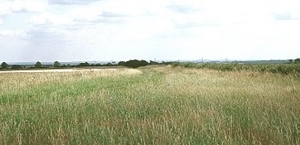 Buffer strips are a useful filler for an ELS plan. They protect and enhance important features such as streams, ponds, ditches and woods. They can also be used to reduce soil run-off and may therefore be part of a soil management plan. In the right places too they can provide additional nesting cover for game and animals like hares. But they are not a panacea, and it would be a huge lost opportunity if these strips were the sole option on any farm. So, use with care, and remember the following:
Buffer strips are a useful filler for an ELS plan. They protect and enhance important features such as streams, ponds, ditches and woods. They can also be used to reduce soil run-off and may therefore be part of a soil management plan. In the right places too they can provide additional nesting cover for game and animals like hares. But they are not a panacea, and it would be a huge lost opportunity if these strips were the sole option on any farm. So, use with care, and remember the following:
- Buffer strips are worthless as cover for broods of pheasants or partridges. The grass sward is too dense and often too wet for them to forage in, and yet neither does it provide enough cover to protect them from aerial predators. Alternatively, a wildflower mix could be sown but only if soil conditions are appropriate (light, infertile soil) and the position is open and sunny (south facing or adjacent to a ditch).
- Field edges, especially on light soils that have been cultivated for generations, often contain the last vestiges of an ancient arable flora of wild flowers. These annuals survive because of annual cultivations and the partial effectiveness of herbicides along field margins. This flora can recover by adopting conservation headlands and, especially, uncropped cultivated margins. On the right land use these options instead of grass buffer strips.
- ELS buffer strips are best built into a plan in two phases. Firstly, map in only those that are essential to protect and enhance existing features. Then move on to plan other ELS options, including especially wild bird seed crops that will give a significant boost to birdlife. Finally, at the end, perhaps include one or two more buffer strips or widen the planned ones to make up the points if needed.
*You may change your mind any time. For more information, see our Privacy Policy.